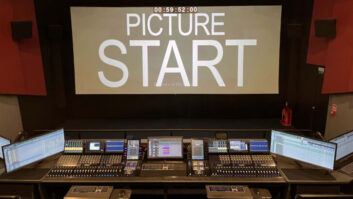It’s almost been a pro audio sport, on and off, for the past 15-plus years: Avid bashing. Practically from Day One, back in 1994, when the hot-tech Tewksbury, Mass., company made Digidesign its first acquisition, many Pro Tools users have been quite vocal in their love-hate relationship with the parent company. Why doesn’t Avid/Digi gear talk to each other? Why can’t I choose my own converters? Why can’t I work offline without IO? Do they really think I should use these PRE’s? No surround panner on the ICON? I’ve got to pay to export to MP3? Why are they picking a fight over mixing outside the box? Live consoles? LE, cool. Buying M-Audio? Cool. Why won’t they open up? Why is it so expensive for just PCI/x/e cards and software? They’re making speakers now? They’ve removed the Digidesign name???
Yes, they did. For a reason. And it seems to be a smart one moving forward. Extensive studies showed that there was brand value in Pro Tools, not Digi. So they kept the former. And ICON and VENUE and M-Audio. Not Euphonix. But big companies make big targets, especially ones that start out small and enter the big leagues overnight. It was only April 1988 when Avid first showed Avid/1 in private rooms at NAB, introducing nonlinear picture editing and truly changing the game. That really wasn’t that long ago, and they had no real competition on the high end for nearly 20 years. So they built more products, tried some audio on their own and then started buying companies: Digidesign in ’94, Softimage and Tektronix in ’98, M-Audio and Bomb Factory in 2004. Pinnacle in 2005 and Sibelius the following year. Then Euphonix earlier this year. They got big. But in high-tech, with the need to continually innovate, bigger doesn’t always mean faster. Final Cut and a reputation of paying little attention to their customer’s requests hit them hard in video. And plenty of very solid DAW manufacturers—Steinberg, MOTU, Apple, Cakewalk and others—have had Digi in their sights for years.
This is no David and Goliath story, and I’m not writing as an Avid apologist; many user (and manufacturer) criticisms have been justified. But think about it: market dominance, in a fast-moving high-tech space, for nearly 20 years now. That is not easy. The Avid highs during the past couple of decades have been in the stratosphere, and the lows have been accompanied by tumbling stock and (false) rumors of bankruptcy. But here they are, 20 years in and still on top. While some may say they are playing catch-up, they are still innovating.
The flurry of announcements out of the Pro Tools camp these past three months has been truly impressive, with HD interfaces and HEAT, then Mbox interfaces, then HD Native and then, last week, stealing the AES thunder with Pro Tools 9 opening up the architecture. (And this comes on the heels of the Media Composer 5 launch on the video side.) Three months of releases, however, means at minimum three years of hard work in shifting the corporate culture, in responding to customers, in realigning priorities—and in developing products that the industry wants. It has paid off. The buzz was more than palpable on the Moscone Center show floor. It was downright exciting. And just wait till they really start integrating EuCon. The future looks bright.
So go ahead and bash if you will. And then go fire up your $599 PT9 software using your own interface, import your WAV file created in another platform and make some music. Pro Tools has opened up.



